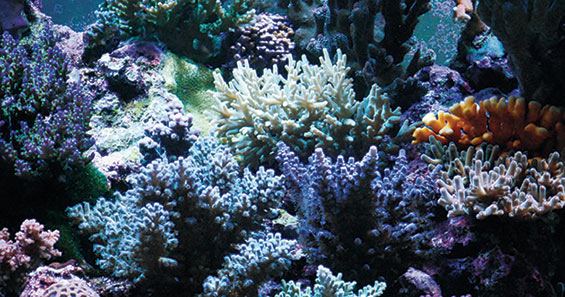Nitrate Removal Options for Complete Nitrification

Does your aquarium perfectly replicate the natural world? Serious home aquarists have long strived to recreate natural conditions from décor to filtration systems to the food that is fed to their fish, plants, or corals. Oftentimes, this dedication extends to diligent control of the aquarium's nitrogen cycle. However, one aspect elusive to even the most advanced aquarium system is complete nitrification.
However, nature and more elaborate aquarium filtration systems continue to further break down nitrate. Within this stage of the nitrogen cycle, another bacteria set converts nitrate into nitrogen gas, which is then released at the water's surface and absorbed into the air. This natural process of nitrate removal from your aquarium is known as complete nitrification or de-nitrification. The conundrum of complete nitrification, however, is that the process relies on special bacteria to convert nitrate into free nitrogen. These bacteria require low-oxygenated, stagnant water to survive. In fact, the oxygen-rich water of most aquariums and filtration systems creates a deadly environment for these essential denitrifying bacteria.
In fact, nitrate causes stress to fish and invertebrates, which opens the door to diseases and reproductive failures. In addition, high nitrate levels can quickly change water chemistry in your aquarium and are often the source of serious algae blooms. Therefore, nitrate removal is vital to your aquarium's overall health.
FRESHWATER Control of nitrate and nitrogen cycle imbalances in freshwater aquariums relies on a multi-step approach. The easiest way to help foster complete nitrification is by keeping your aquarium clean. Routine water changes are vital to toxic waste removal and should be performed regularly, regardless of the filtration system you employ. The addition of live plants will also help control nitrate. Nitrate and other nitrogenous compounds are vital for plant growth and aquatic plants will pull these chemical compounds from the water column. There are also chemical media that help detoxify nitrate, nitrite, and ammonia. SALTWATER Like freshwater systems, saltwater aquariums also require routine cleanings and water changes for the best nitrate and nitrogen cycle control. Beneficial macroalgae and chemical media also help reduce nitrate levels in your saltwater system. Skimmers can be particularly effective at helping prevent the formation of toxic chemical compounds, since they remove dissolved proteins from the water column. Refugiums can also be ideal locations for the growth of nitrate-consuming bacteria. Knowledge and application of effective cultivation of nitrate-consuming bacteria in marine aquarium systems has developed tremendously in recent years. It is now known that in order for efficient denitrification to occur, a readily biodegradable carbon source must be available as food for denitrifying bacteria. As such, innovative products employing carbon-rich biomedia or liquid carbon sources have been developed for convenient use. Aquarists can set up filter media reactors with biomedia to establish conditions favorable for denitrifying bacteria. Liquid additives can also offer added convenience and extreme ease of use. However, possibly the simplest way to help control chemical toxins in your saltwater system is through the addition of manufactured "live" rock. In addition to being rich in biological diversity, manufactured rock is unique in that it supports both nitrifying and denitrifying bacteria. Oxygen-loving nitrifying bacteria colonize on the rock's outer surface and aid in the nitrogen cycle. Within the rock, in low-oxygen areas, denitrifying bacteria thrive to help consume nitrate and promote complete nitrification.
|
||
|
|


